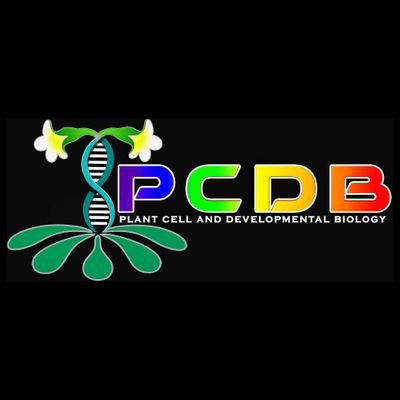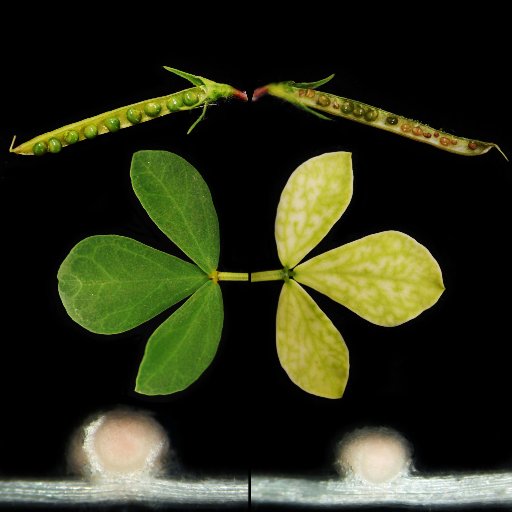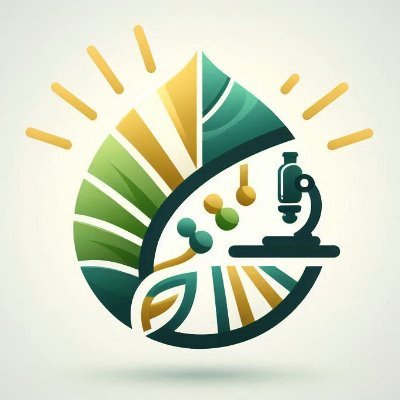
Yadukrishnan Prem
@yadukrishprem
Followers
819
Following
3K
Media
3
Statuses
662
Assistant Professor @bitspilaniindia | Former postdoc & @IndiaDST INSPIRE Faculty @iiscbangalore | PhD @pcdb_lab_iiserb | Plant Biology 🌿☀️
Rajasthan, India
Joined June 2010
Check out the latest pre-print from the lab @sbslab_IISERM Gr8 work led by Pooja @PJakhar_3097 "Blue Light Promotes Root Iron Acquisition via a Shoot CRY-HY5 Signaling Module in Arabidopsis" @DBS_IISERM @IiserMohali
biorxiv.org
● Iron (Fe) is an essential element for almost all living organisms and its deficiency severely impacts crop productivity and human health. While the mechanisms underlying iron uptake and accumulat...
6
15
63
An interesting finding from Noryang that MPK3/6-IAA3/7 module during auxin signalling is now out. Congratulations to Noryang, Mrinalini, Neetu, Kirti and Sumaira 🙂 @NIPGRsocial @noryangz @MannaMrinalini @n_verma15670 @SarveshJonwal @ThePlantscience
https://t.co/RqV4iXDZKA
9
9
61
Congratulations @TheLahaLab!
Deeighted to share our on "GA-independent DELLA regulation by inositol pyrophosphate in a nonvascular land plant", published now in Nature Chemical Biology @nchembio. Excellent efforts by @Priyans73221614 Priyanshi, a brilliant graduate student in my lab.
1
0
1
Excellent work from team @kalikapg on cell geometry-guided wound repair in plants!
Our new paper is out! 1/16 How does an organ rebuild its shape after injury? It's not just about making new cells, but aligning them in the right direction — like bricks shaping a structure. https://t.co/oZ4zLCOVCm
1
0
9
BRIC-NIPGR has developed the highest Glucoraphanin producing Brassica crop by Gene Editing Using gene editing-mediated knockout of AOP2 gene family, BRIC-NIPGR researchers have developed oilseed mustard with the highest level of Glucoraphanin known so far- https://t.co/ZLVS0n6IFU
9
23
81
Emerging from the soil: a new beginning 📖 https://t.co/0TmgJPDoYh
#Commentary by Fan and Xu highlighting the recent work by Ravindran et al. 📖 https://t.co/ZiBTpHgzd5
0
14
34
We @Plant_EnSiGnLab @iiserkol, and Prof. Mukes Jain's lab @JNU_official_50 are delighted to share our new research article on "PIF3 role in thermomorphogensis", by @SreyaDas1994, @AnnayasaModak, Dr. Mohan Singh, @1201vinny, @VishmitaSethi , in @NewPhyt
https://t.co/CCK6RaO9w4
nph.onlinelibrary.wiley.com
The role of PHYTOCHROME INTERACTING FACTOR 3 (PIF3) in thermomorphogenesis, despite being a crucial regulator of photosensory hypocotyl growth in Arabidopsis, remains unknown. Here, we demonstrate...
19
11
69
🔬📊 Comment: A checklist for designing and improving the visualization of scientific data @NatureCellBio
https://t.co/UUkgQ4LBto
0
29
124
Excited to share the latest study in @NewPhyt, exploring how a B-box factor integrates light and ethylene signaling to optimize seedling soil emergence. Kudos to @NevedhaR, @KavuriVenkates5, and @sdatta7925 for the efforts! Thanks @iiserbhopal @DBS_IISERB
https://t.co/SMYsZKriMH
nph.onlinelibrary.wiley.com
See also the Commentary on this article by Fan & Xu, 248: 435–437.
18
17
92
#JustIn on Plantae: Back to Basics: Contributions of Plant Science to Fundamental Scientific Concepts by ASPB Plantae Fellows, @gourav_arora_g, Elise Krespan, and @AbiraSahu. https://t.co/AsaOcyuHQe
#plantsciencejob
#plantscience
plantae.org
Plant biology has always been at the center of biological research. When most people think about biology, they often think of human physiology—doctors with stethoscopes, the structure of the heart…
0
7
29
“The important thing is not to stop questioning. Curiosity has its own reason for existence.” Just published a new article inspiring kids to explore the wonders of science. @saumitradc @LingwanManeesh. https://t.co/piwPWsdyJU
#scienceoutreach #kidsinSTEM
kids.frontiersin.org
How do scientists discover new things about living organisms, like a new life pathway or a cycle? They do it using model organisms. Model organisms, which are simple organisms that have important...
1
9
27
Butterfly! Butterfly! Our study just published from #ImranLab @ccmb_csir in @NaturePlants can be explained with the help of a butterfly. Worm > Cocoon > Butterfly – a transformation that has fascinated researchers, photographers, and poets for centuries. 1/n
10
18
77
We @Plant_EnSiGnLab are happy to share our new research article highlighting the unequal genetic redundancies among MYC transcription factors in controlling seedling photomorphogenesis in Arabidopsis https://t.co/ROOnNeNr0h in @PlantDirectJ
12
4
48
A fantastic start to 2025! Delighted to share that our latest study on BBX22-mediated DNA damage repair under high UV-B stress is now online. Congrats @job_nikhil @shubhiD26 @LingwanManeesh & @sdatta7925! Thanks @PPLplantarum @DBS_IISERB @iiserbhopal
https://t.co/GFQM6YlNUL
onlinelibrary.wiley.com
Under changing climatic conditions, plant exposure to high-intensity UV-B can be a potential threat to plant health and all plant-derived human requirements, including food. It's crucial to underst...
3
14
53
📣 Plant Physiology welcomes new Assistant Features Editors starting in 2025 and 2026!👉 https://t.co/8LKCnqVHER A big thanks, to those who are stepping down from the position!👏
0
14
70
An interesting EMBO workshop is coming up at CSIR-IHBT..
1/2 CSIR-IHBT is organising EMBO workshop on “High Elevation Plant Adaptation in a Changing Climate (HEPACC)” during February 25-28, 2025. @DrSudeshKumarY1 @CSIR_IND @DrNKalaiselvi @VigyanPrasar @PMOIndia @DrJitendraSingh
0
2
13
#newarticle
#Review Throwing light on "light*nitrogen" interaction! Thanking all authors One from the #BUCKETLIST
https://t.co/RGzn41vMPu
5
8
94
🌿Just published in New Phytologist! Our review explores how leaf thickness—shaped by genetics and environment—boosts plant fitness. Can this hidden trait hold answers for climate resilience? 🌍 https://t.co/PrMes6gvaE
@PrakshiAneja @rajarshi_sanyal
nph.onlinelibrary.wiley.com
Leaf thickness, the leaf growth in the third dimension as quantified by the distance between the adaxial and abaxial surface, is an indispensable aspect of leaf development. The fitness of a plant...
1
8
32
Huge congratulations @AnuragDaware on this remarkable achievement! So proud!
I feel immense satisfaction knowing that my PhD work has proven valuable to other researchers. It’s rewarding to see my efforts contribute to the broader scientific community.
1
0
2
Excited to share our work on the regulation of inositol pyrophosphates messengers by the DDP1-type phosphohydrolases in land plant, now published in Biochemistry @BiochemistryACS! https://t.co/3q3YT0KdtM
pubs.acs.org
Inositol pyrophosphates (PP-InsPs) are eukaryote-specific second messengers that regulate diverse cellular processes, including immunity, nutrient sensing, and hormone signaling pathways in plants....
11
8
53























